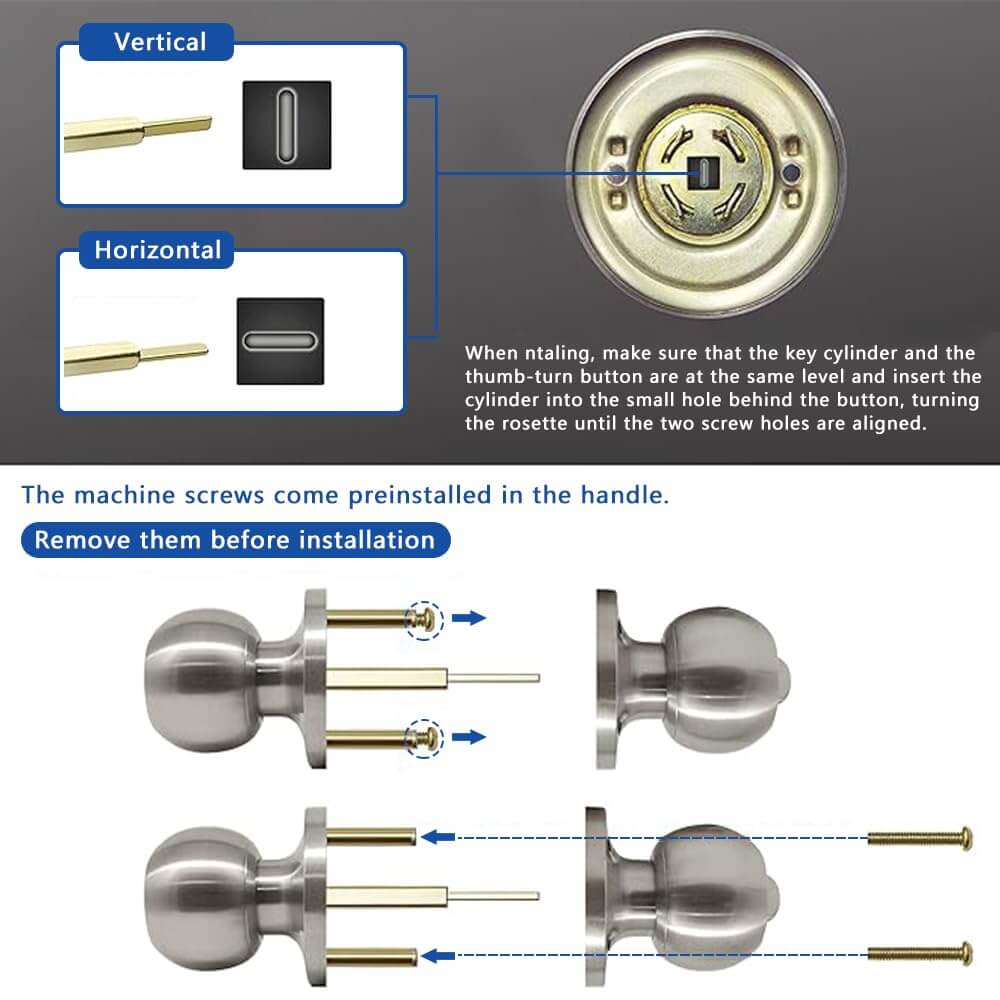
Is a Deadbolt Needed After a Sliding Door Lock Replacement?
Share
Sliding doors are a popular choice in modern homes for their sleek look and ability to let in natural light. But when it comes to home security, sliding doors can also be a weak point if not properly reinforced. After a sliding door lock replacement, many homeowners ask the crucial question: is adding a deadbolt necessary?
The answer depends on several factors, including your location, the build of your sliding door, and your desired level of security. This article will walk you through everything you need to know to make the right decision for your home’s safety.
Understanding the Vulnerabilities of Sliding Doors
Unlike traditional hinged doors, sliding glass doors operate on a track and often use latch-based locking mechanisms. While convenient, these locks may not always provide the same level of resistance against forced entry. Burglars can exploit weak points by prying the door off the track or bypassing the latch lock entirely.
Replacing a worn-out or broken lock is a smart move, but not all door lock replacement solutions offer sufficient security on their own. That's why many homeowners consider adding a secondary lock, like a deadbolt, to reinforce protection.
What Is a Deadbolt and How Does It Work?
A deadbolt is a type of lock that provides a high level of security because it doesn’t rely on spring mechanisms, which are easier to tamper with. Instead, a deadbolt extends a solid steel bolt into the door frame, making it much harder to force open.
There are several types of deadbolts available today, including single-cylinder, double-cylinder, and smart deadbolts. Each offers varying levels of control, convenience, and strength, depending on your needs. When installed correctly, a deadbolt can significantly reduce the chances of unauthorized entry.
Are Deadbolts Compatible with Sliding Doors?
Traditionally, deadbolts are used on hinged doors. However, sliding door security has evolved, and now there are deadbolt-style locks designed specifically for sliding doors. These specialized locks can be installed on the upper or lower part of the sliding frame and often feature vertical bolts or pins that drop into the track to prevent movement.
If you're considering a deadbolt after replacing the sliding door lock, make sure it is compatible with your door type and installed by a professional or with precise care. Inappropriate installation can compromise both the functionality of the lock and the integrity of the door.
When Is a Deadbolt Truly Needed?
While your newly installed sliding door lock may seem secure, a deadbolt can offer peace of mind and added protection in several scenarios:
- High-crime areas: If you live in a neighborhood with a history of break-ins, a deadbolt can act as a strong deterrent.
- Ground-floor access: Sliding doors at ground level are more accessible and often targeted by burglars.
- Old or worn sliding doors: Older doors may have weak locking mechanisms that are easy to bypass.
- Vacation homes: For properties left unattended for long periods, a deadbolt adds extra security.
Modern Alternatives to Deadbolts
While deadbolts remain one of the most effective ways to enhance door security, modern technology now offers other alternatives. For instance, multi-point locking systems can secure the door at several points along the frame. Smart locks can alert you to unauthorized access attempts and allow for remote locking and unlocking.
If you're already investing in a new sliding door lock replacement, consider whether these advanced systems might meet your needs without the added step of installing a deadbolt. But remember: convenience should never come at the expense of safety.
Installation Tips for Maximum Security
Whether you go with a deadbolt or a high-quality sliding lock, proper installation is essential. Here are a few tips:
- Use high-quality hardware and tools.
- Ensure the locking mechanism is aligned perfectly with the strike plate or track hole.
- If you're unsure, hire a professional locksmith to ensure accuracy and strength.
- Test the lock multiple times before relying on it as your primary security measure.
Combining Locks for Better Results
For maximum security, combining a new sliding lock with a deadbolt or security bar is highly effective. Each lock type adds a layer of resistance, making it far less likely for intruders to gain entry without making noise or taking time—two things burglars avoid.
Layered security isn’t overkill—it’s smart. Particularly for homeowners who store valuable possessions, live alone, or are frequently away from home, combining lock types is one of the best defenses against unauthorized access.
Final Thoughts
So, is a deadbolt necessary after a sliding door lock replacement? While it's not required in every case, it's often a highly recommended addition—especially if you prioritize home security. A reliable deadbolt can offer the peace of mind that even the best sliding door locks may not fully provide on their own.
Evaluate your specific needs, the location of the door, and the type of sliding mechanism you have. If you're investing in a door lock replacement, why not make sure it delivers comprehensive protection?
With the right combination of locks and installation, you can enjoy the aesthetics and convenience of sliding doors without compromising on safety. Stay secure, stay smart!

